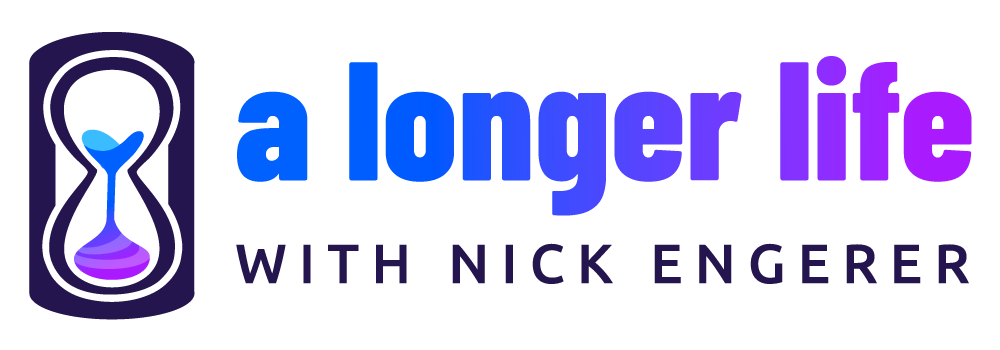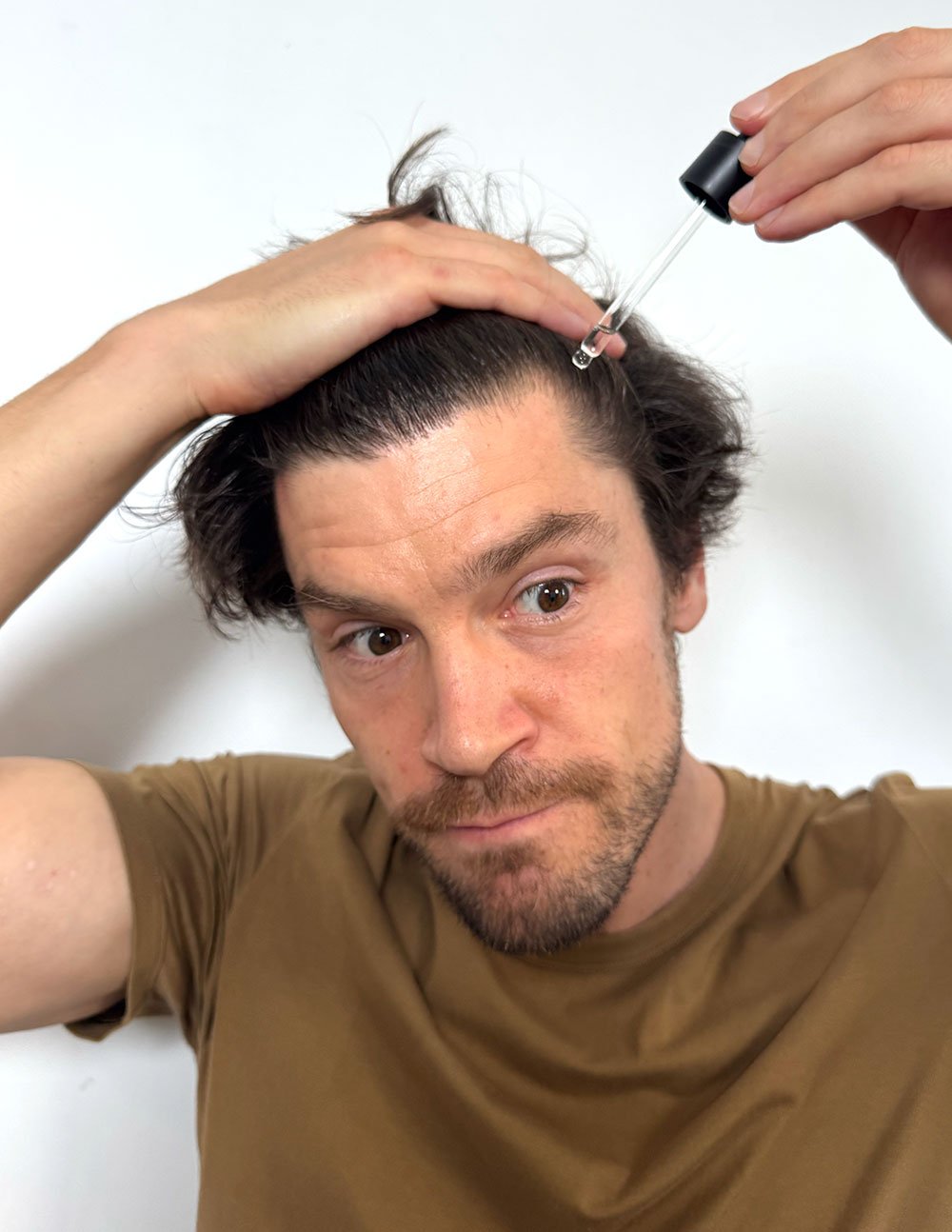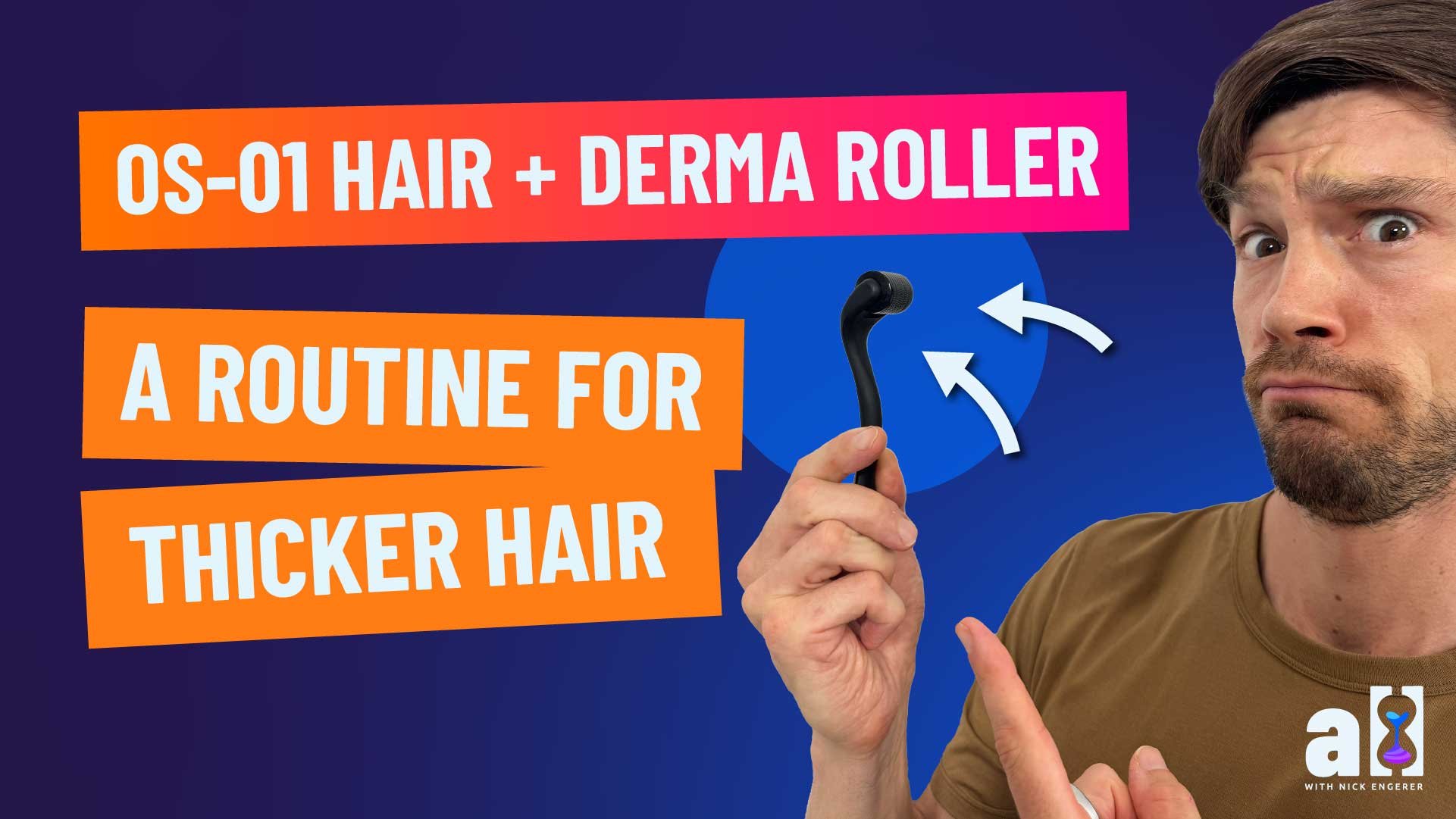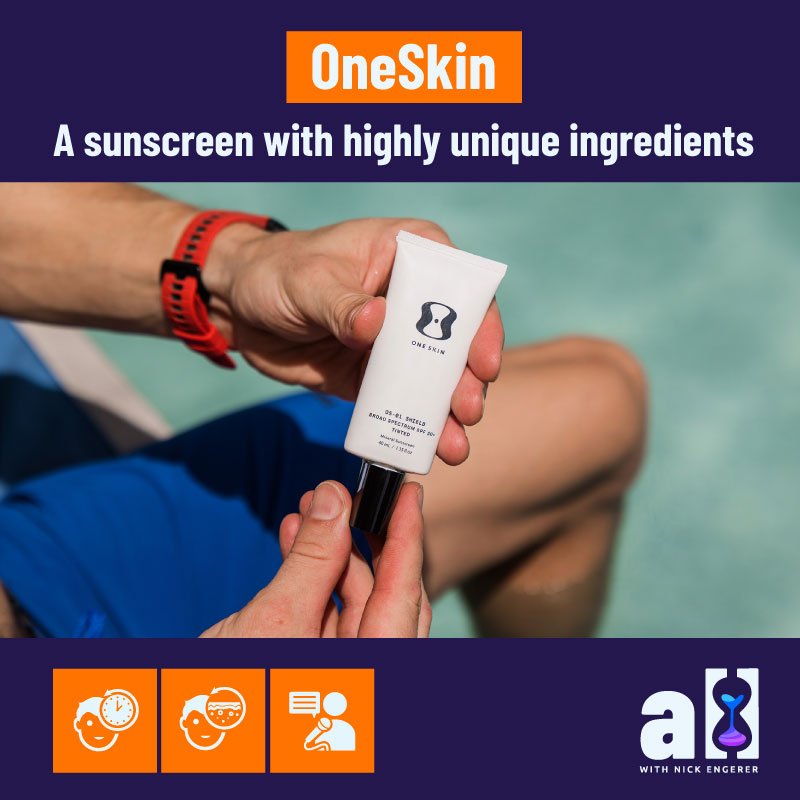OneSkin OS-01 Hair: A New Solution for Hair Loss Targeting Cellular Senescence
OneSkin OS-01 Hair: A New Approach to Hair Loss
I’ve certainly said it before, and I’ll say it over and over again. Your appearance is about much more than vanity, it is an asset to be invested in and protected. While we have covered aesthetics many times before on A Longer Life, we’ve yet to foray into the topic of hair loss and hair regrowth.
It is a topic that is front of mind (front of head?) for many, particularly men who are challenged by male pattern baldness. I can recall seeing a number of my friends starting to struggle with the first signs in their late twenties to early thirties. By their late 30s, some had chosen to just shave off their hair. Others have opted for pharmaceuticals like minoxidil or finastride, and they seem to have slowed their losses down (for now) - but of course, they may be experiencing unwanted side effects (statistics say they likely are).
However, what I have found in the wide array of resources detailing the how and why behind hair loss - is that the aging process was seldom, if ever, mentioned. Where discussions of it do appear, they are spoken in terms of that widely accepted slow decline we all inevitably must succumb to.
But I know that the readers of A Longer Life think differently and that you’re after the latest in longevity technologies, especially ones that result in a complete paradigm shift. While it is certainly too soon to say, the science team at OneSkin may have once again outdone themselves, by introducing OS-01 Hair, which I have been actively testing since pre-release.
Senescent Cells and Hair Regrowth
When we put on our detective caps and start digging around into the ‘why’ behind hair loss, it is perhaps no surprise that one of the primary hallmarks of aging - cellular senescence - appears to be the chief culprit.
We have covered cellular senescence before in some detail through my interview with Dr. Carolina Reis, CEO and Co-Founder of OneSkin, so I will defer to that content for those who would like a deeper understanding. For those of you who are brand new to the topic or need a reminder, cellular senescence is a state in which cells permanently stop dividing, often as a response to stress or damage, playing a role in aging and disease by causing inflammation and disruptions to normal cellular function.
 |
Does cellular senescence have a role to play in hair loss? As it turns out, yes and the linkages are quite clear. While the science is still being settled on exactly how and to what extent, here is what we know so far:
The cells which drive hair growth and or the surrounding skin can become sensescent
When they do, the hair follicle loses its ability to regenerate (a part of its natural cyclical process)
Progressively, hair becomes thinner, less dense as a result
Thus, cellular senescence is one of the drivers of hair loss
Building off what we know about the OS-01 peptide already, and its ability to reduce the biological age of the skin through the removal of senescent cells, the question “Can OneSkin OS-01 Hair Help with Hair Loss?” naturally follows.
And while the evidence that demonstrates OS-01 can help re-grow / stop hair loss could be called ‘thin’ at the moment, it is certainly quite promising (particularly for men) and progressing quite rapidly.
Before I talk myself in circles, I suggest we defer to the experts on this matter. To better understand their new product, OS-01 Hair, I interviewed Chief Science Officer Dr. Alessandra Zonari.
When you buy through our links, we may earn a commission. Thank you for supporting our business
How OS-01 Hair Targets Cellular Senescence for Hair Loss
A Longer Life (ALL)
Today I’m joined by Dr. Alessandra Zonari, Co-Founder and Chief Scientific Officer at OneSkin. We're here to talk about an exciting new addition to their product line, OS-01 Hair.
Alessandra Zonari:
I’m really excited to talk about this new innovation we’re launching, actually, today is the official launch day as we’re recording this!
ALL:
That’s perfect timing! Just before we started recording, I was saying how much I enjoy staying at the forefront of new developments and being among the first to know. I was fortunate enough to visit the OneSkin Labs back in July 2024, where I got a sneak peek at some of the projects you were working on. I don’t think OS-01 Hair was one of them at the time but here it is now!
You’ve developed this new product using the OS-01 peptide, the same molecule that powers the rest of your skincare line which, by the way, has done wonders for my skin. You've also created a fantastic sunscreen, so I think this new hair product is a brilliant addition to your lineup.
Question:
Since you’ve included the OS-01 peptide in a hair formula, that suggests cellular senescence must play a key role in hair loss—is that right? (The answer to this question is in the next video).
The OS-01 Peptide’s Hidden Link to Hair Loss
Alessandra Zonari:
The reason we started exploring the scalp and hair loss is because we began to recognize that cellular senescence plays a key role in both hair thinning and hair loss.
Just as a reminder cellular senescence refers to damaged cells that should naturally die and be cleared by the body, but instead they persist and accumulate with age. These senescent cells secrete pro-inflammatory signals that damage surrounding tissue.
At OneSkin, we’ve been studying cellular senescence in the skin since 2016. After launching our current line of products, we started seeing more research indicating that senescent cells also build up in hair follicles.
Studies have shown that aged hair follicles contain more senescent cells compared to younger ones. And in men with pattern baldness, researchers have collected hair follicle cells from areas of the scalp with visible hair loss and compared them to areas with healthy hair growth. The results show that follicles from balding areas have a significantly higher presence of senescent cells.
So the science is clear—senescent cells accumulate in hair follicles as we age, and they contribute to hair thinning and hair loss.
Since the OS-01 peptide is specifically designed to target and reduce the accumulation of senescent cells and decrease the inflammatory signals they release, we thought it made sense to explore whether it could have similar benefits when applied to the scalp.
After all, the scalp is skin tissue. It’s biologically similar and directly connected to the skin we’re already treating with OS-01. So, it felt like a natural next step to explore how we might address another visible sign of aging: hair thinning and hair loss.
Senescent Cells’ Impact on Hair Loss and OS-01 Hair’s Solution
ALL:
You referenced several recent scientific studies that explore the connection between hair follicles, their growth phases, and cellular senescence. Let’s go a layer deeper into the role cellular senescence plays in hair thinning and loss.
Alessandra Zonari:
What we’ve learned is that aging hair follicles tend to accumulate more senescent cells. Interestingly, this process can also be triggered by stress hormones.
As we reviewed the literature, one thing that stood out was the impact of stress-related hormones, such as CRH—corticotropin-releasing hormone. This is one of the hormones our bodies release during periods of psychological or physiological stress. What’s fascinating is that CRH can actually induce cellular senescence in hair follicle cells.
This insight led us to begin a series of experiments in our lab. We started by culturing hair follicle cells and then exposing them to stress hormones to see if they would become senescent. From there, we tested whether our OS-01 peptide could reduce the formation and accumulation of these senescent cells.
And the results were promising. We observed a 20% reduction in the formation of senescent cells, and more than a 30% decrease in the release of inflammatory cytokines. These findings were really exciting and gave us the confidence to begin developing a formulation that could deliver the OS-01 peptide directly to the scalp to evaluate its impact on hair growth.
ALL:
I’ve had the chance to visit your lab, and it was incredibly impressive—such a dynamic and inspiring space. I even brought my son along, and he had tons of curious questions! It was clear there’s a lot of cutting-edge science happening there.
Question:
When it comes to the lab work you just mentioned the initial studies you ran were you specifically analyzing scalp tissue, or were you working directly with hair follicle cells?
Alessandra Zonari:
We used two models in our early experiments. One involved hair follicle cells isolated directly from the follicle specifically, dermal papilla fibroblasts, which are crucial to hair growth. The second model involved another type of cell from the follicle, though the name is a bit more complex.
OS-01 Hair’s Support for Early-Stage Hair Thinning
ALL:
When it comes to male pattern baldness, which we know is largely hormone-driven. That leads me to think about how many current hair loss treatments focus on targeting hormone-related issues, particularly DHT.
Alessandra Zonari:
DHT, dihydrotestosterone, is a derivative of testosterone and is a key driver of androgenetic alopecia, the most common form of hair loss in men and some women. What’s interesting is that research shows the presence of DHT in the scalp can actually induce cellular senescence in hair follicle cells.
This is where things get interesting in terms of how our OS-01 peptide works. Unlike treatments that directly target DHT, OS-01 acts at the cellular level. It helps reduce the accumulation of senescent cells, regardless of whether those cells are there due to DHT sensitivity, aging, or stress. So, while our peptide doesn't block DHT itself, it complements DHT-targeting treatments by improving the environment within the follicle making it more supportive of healthy hair function.
Essentially, OS-01 targets the root cause of aging at the cellular level within the hair follicle. However, it's important to understand that it won't reverse baldness in cases where the hair follicles have already been completely lost due to DHT sensitivity—especially in more advanced stages of androgenetic alopecia in men.
Where we’re seeing promising effects is in the early stages of hair thinning. That’s when senescent cells are starting to accumulate in the follicle, often triggered by hormonal disruption. This buildup can shorten the anagen phase—the active growth phase of the hair cycle—leading to thinning.
By reducing these senescent cells, OS-01 may help preserve and extend the anagen phase, making it especially useful for preventing further hair loss and supporting healthy hair growth in its earlier stages.
Enhancing OS-01 Hair’s Effects with Derma Rolling
Alessandra Zonari:
We also analyzed the scalp microbiome, because we now know that it plays a key role in the different stages of hair growth. Some types of bacteria produce beneficial metabolites that support the health of hair follicle cells and encourage hair growth. Others, however, can create a more inflammatory environment, which may contribute to hair thinning or scalp irritation.
In our study, we collected scalp microbiome samples and performed DNA sequencing before and after six months of using the product. The results were very promising. We saw a healthier balance of bacteria, with an increase in microbes that promote hair growth and a reduction in those associated with dandruff, inflammation, or irritation.
Now, we don’t attribute this improvement solely to the OS-01 peptide; it's also due to the overall formulation. We included prebiotics, antioxidants, and other ingredients designed to support scalp health. We were really pleased to see that this full formula helped shift the microbiome into a more balanced and supportive state for hair growth.
ALL:
As I understand it, it is designed to make tiny micro-perforations in the skin. This helps improve absorption of the peptide serum, right?
Personally, I’ve been using it in areas where I’ve noticed some thinning pretty typical for men. I’m fortunate that I don’t have full male pattern baldness, but I do have a little recession. I suspect that my hair thinning is probably more related to cellular senescence.
What I do is slick my hair back to expose those areas, gently use the derma roller over the spot, and then apply a small amount of the OS-01 peptide serum. It’s super lightweight and easy to use. I just massage it in.
Alessandra Zonari:
That’s exactly the right way to do it! The formula is water-based, so it absorbs quickly without leaving your hair greasy. That makes it easy to style afterward, especially for women. We worked hard to create a lightweight and user-friendly formula, and I’m really happy with how it turned out.
As for the derma roller, it not only improves serum absorption, but it also stimulates blood flow in the area. Increased circulation means better nutrient delivery and a healthier environment for the hair follicle cells. We definitely recommend using the derma roller to amplify the effects of the serum. And you demonstrated it perfectly!
OS-01 Hair and a Healthier Scalp Microbiome
ALL:
What characterizes and supports a good scalp microbiome?
Alessandra Zonari:
A healthy scalp microbiome is primarily the diversity and balance of microorganisms, including both bacteria and fungi. The composition of these microbes plays a crucial role in scalp health and, by extension, in hair growth.
There are specific bacterial species, their names are quite complex that are already known, and even published in scientific literature, to produce metabolites that support hair follicle health and promote hair growth.
In our study, we observed a shift in the microbiome, an increase in beneficial bacteria and a decrease in those considered less helpful, or even harmful. For example, conditions like dandruff or scalp irritation are often associated with an overgrowth of certain fungi. With the continued use of our product, we saw a reduction in these problematic fungal species, suggesting a move toward a healthier scalp environment.
By analyzing the balance of microbial species, we were able to identify patterns that align with either a healthy or unhealthy scalp. It was especially rewarding to hear from the independent lab that conducted the analysis, they were genuinely excited about the results. They mentioned that they had tested other hair care products before and rarely saw such a positive impact on the scalp microbiome. That validation meant a lot to us, it confirmed that our formulation is truly shifting the scalp microbiome in a healthier direction.
How Aging Disrupts Hair Growth Cycles
ALL:
Can you explain how our hair cycles are cyclical?
Alessandra Zonari:
Our hair goes through natural growth cycles, which are made up of three main phases. The anagen phase is the active growth phase. It’s the longest phase, lasting anywhere from 2 to 7 years, and during this time, about 80 to 90% of your hair is growing. That means most of the hair on your scalp is in this phase at any given time, and you naturally renew your hair roughly every few years depending on your individual cycle.
After the anagen phase, the hair transitions into the catagen phase, which is a short resting period when hair growth stops. Following that is the telogen phase, during which the hair sheds and eventually falls out, making space for new hair to grow.
In a healthy person, this cycle allows for a continuous renewal of hair older strands are gradually replaced by new ones. However, with aging and the accumulation of senescent cells (those dysfunctional cells that no longer divide and release inflammatory signals), the anagen phase can be shortened. Instead of staying in the growth phase for several years, hair may prematurely shift into the catagen and then telogen phase, leading to earlier shedding.
This is one of the reasons why some people find it difficult to grow their hair long it’s not necessarily breaking off, but rather falling out before it reaches its full potential length. That shortened growth cycle is often driven by biological aging and cellular stress.
OS-01 Peptide combined with added ingredients for a healthier scalp
ALL:
Question: We’ve learned that the aging process disrupts our normal hair growth cycle - explain this for us?
Alessandra Zonari:
One important thing to understand about hair growth is that because the hair cycle is long, consistent use of the product is essential, and results take time to appear. We generally start to see noticeable improvements around the 3-month mark such as less hair shedding, thicker strands, and more visible growth. One of the first things people notice is a reduction in shedding, followed by hair that feels stronger and a scalp that feels healthier less itchy, less irritated, especially for those who struggle with sensitivity in that area.
We also conducted beta testing and gathered data at 1, 2, and 3-month intervals. While results varied, we started to see strong improvements after just 2 months in many cases. But again, the key is regular, consistent use, especially in the beginning.
ALL:
I’ve personally been using it twice a day, and I’m about four weeks into the process. I documented the starting point by taking photos from every angle with my iPhone, and even used a dermascope to capture high-resolution close-up images. While I don’t have the same analytics tools you use in the lab, I’ve mapped exactly where I’m applying the serum so I can track the results over time. And based on the success I’ve already seen with OS-01 Face, I’m optimistic. I’d love for my hair to stay thick, strong, and youthful, so I’m really looking forward to seeing the changes and sharing them with the audience. We’ll definitely check back in at the 3- and 6-month marks.
Question:
Could you tell me about 2 or 3 ingredients that are in the OS-01 Hair and what the benefits are?
Alessandra Zonari:
While the OS-01 peptide targets cellular senescence, we’ve included a number of additional ingredients that provide synergistic benefits. For example, we have:
Fisetin, a natural senotherapeutic compound that also supports the reduction of senescent cells.
Sunflower extract and ginseng extract, which are rich in antioxidants that help protect against UV radiation and other environmental stressors.
Herbal and botanical extracts that promote overall scalp and follicle health.
And prebiotics that support a balanced scalp microbiome.
It’s really a comprehensive formula. Together, these ingredients nourish the hair follicle, reduce oxidative stress, and create the right environment for healthy, strong hair growth.
Want to learn more? Watch the full interview
 |

















